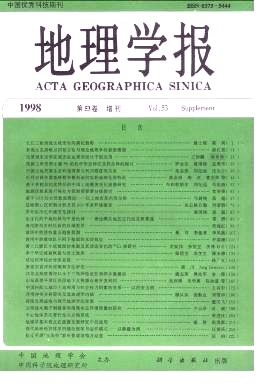Jing Xueqing
Early in 90's,Chinese government opened the border regions's gate toward the border countries.In the same time,the border regions in China began to be developed largely.What is the border regions prospect of opening and developing? This is the question that the paper will answer.There are five factors that affect opening and developing the border regions,namely,political relations,opening level,natural resource and condition,economic level,convenient level of communications,etc.We have got the answer through analysing the five factors and studying the examples of opening and developing the border regions between the USA and Canada,and between USA and Mexico.There are 15 countries round Chinese border,namely,D.P.R.K orea,Russia,Mongolia,Kazakhs tan,Kirghizstan, Tadzhikistan,Afghanistan,Pakistan,India,Nepal,Sikkim, Bhutan, Myanmar, Laos and Vietnam.After the founding of People's Republic of China, because of long-term continuous cold war and harsh international environment,China's wish to cooperate and contact with all countries in the world can not been realized.China and the neighboring countries'political relation also went through twists and turns,had some times of quite tense relation.In 50's,China and India's relation was very tense.In 60's China and the Soviet Union's relation was worsened.At the end of 70's,China battled with Vietnam.But from 80's,the world situation changed,peace and development became a dominent matter.China and the border countries'political relation improved largely.Friendly phase that didn't arise before appears.The border countries and China maintain good political cooperation relations now.After the end of the cold war, the overwhelming majority of the border countries have executed opening policies, and had economic and trading relations with China. The border regions' natural resources in China and in the border countries are very rich and their developing potentialities are large. But natural conditions of developing the resources are not very good, and some regions' natural conditions are even very adverse. The economic level of the border regions in China are quite low稵he border countries are all developing countries are all developing countries and ditricts.Their economic growth degrees are not high either.Some are even very backwand稡ecause of separation of the large mountain ranges that surround the borders of China,and very adverse natural environment of the border regions,the transport and communication institutions which are engaged in economic and trading action are poor.These are the basic conditions of opening and developing the border regions in China.The conditions decide its macro-prospect.Through study we put forward three basic estimates about the macro-prospect of opening and developing border regions in China.(1)O pening and developing the border regions in China can get a steady development.The macro-prospect is quite optimistic.Because of long-term geographic gradient,economic divergence at different degrees and mutual reqirements between China and its border countries,the frontier resource development and economy and trade exchange will develop,will not stop so long as China and the border countries maintain so good political relations as the present ones,and mutual opening.But the developing speed will not be very fast either,it will only develop steadily,because China and its neighboring countries have a mutual fitting process through their economic adjustment,and have a problem of bearing ability of economic development.(2)The very concentrated economy regions can not form in the border regions between China and the border countries like the eastern border regions between USA and Canada.Natural conditions of the border regions in China are not good,such as climate,topography,et c.,so the resource development and economic development are retricted quitely.As in forward position of military defense,the political and military functions of the border regions play a principal role,and the economic development level is ver low,so the border regions can not become developed regions in a short time on such a weak economic basis.Because of the undeveloped economy and very bad natural conditions,tran sport facilities of the border regions are very disappointing,and the clear degree of economic and trade contacts is not good.This will also restrict economic development of the border regions.The neighboring countries'border regions adjoining with Chin a are in the same situation basicly.(3)Some border regions in China can become more developed economic regions,such as Tumen River district of the northeastern China,connective parts of Lanchang River-M aigong River of the southwestern China and Yili River district of northwestern China,etc.These regions belong to superier locations in the border regions.Their conditions of opening and developing are better in China.Their natural conditions are more advantageous,the economic level and opening degrees are higher,and the transports outward or inward are more convenient.Especially these regions have got attention and in terest from the developed countries and international economic organizations.The developed countries and international economic organizations raise funds and take part in development and construction of the border regions.This will largely accelerate development of the border regions.
